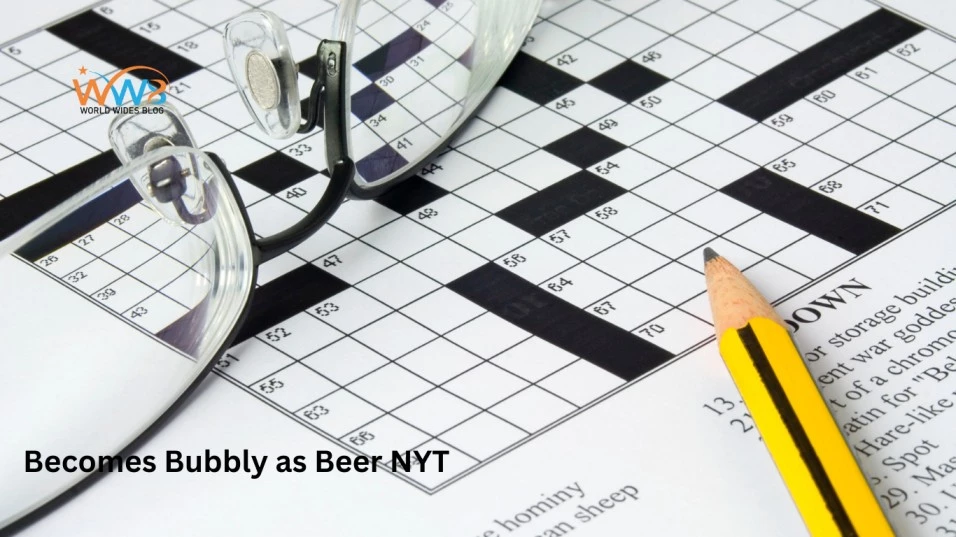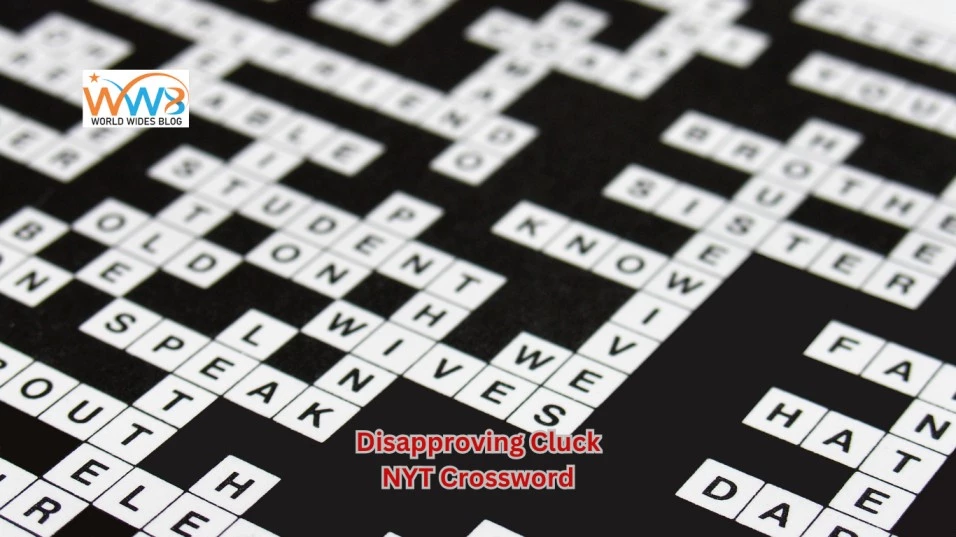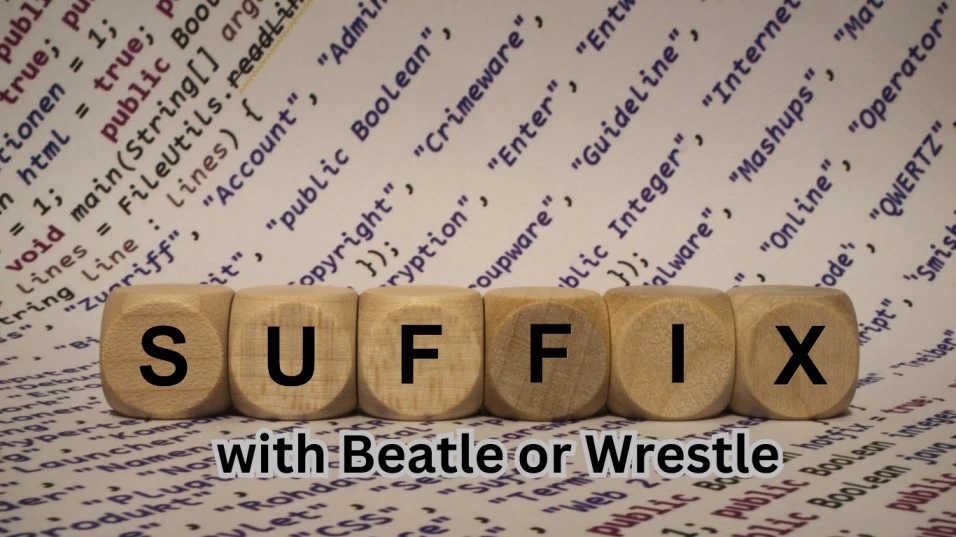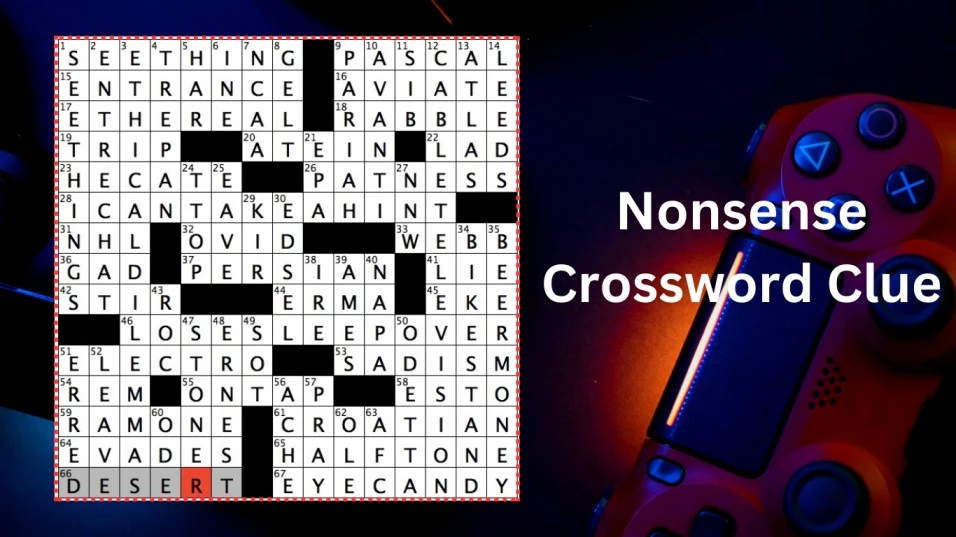People of all ages have loved doing crossword puzzles for a long time. They offer a delightful combination of mental exercise and entertainment, challenging solvers to decode clever clues and fit words together in a grid. Among the many crossword puzzles available, the New York Times (NYT) Crossword is among the most prestigious and widely recognized. The NYT Crossword is known for its well-crafted clues, some of which can be deceptively simple yet incredibly tricky.
Many people noticed the clue Becomes Bubbly as Beer NYT from the New York Times. While seemingly straightforward, this clue has left some solvers scratching their heads. In this article, we’ll explore its intricacies, explore its potential answers, and provide tips for tackling similar crossword challenges.
Understanding Crossword Clues
How Crossword Clues Work
Crossword clues are typically structured to help solvers find the correct word that fits the definition and the available grid spaces. Each clue generally includes:
- Definition: The clue gives a word that means the same as the answer.
- Wordplay: Additional hints or puzzles that need to be solved to find the answer.
The Role of Wordplay in Crossword Clues
Wordplay is a common element in crossword clues. It can involve puns, anagrams, homophones, or double meanings designed to mislead or challenge the solver. Understanding the different types of wordplay is crucial for solving more complex puzzles.
Types of Clues: Straight, Cryptic, and Themed
- Straight Clues: These are direct and often rely on synonyms or definitions.
- Cryptic Clues: These use wordplay. They need some creative thinking.
- Themed Clues: These clues relate to a particular theme or topic, often found in Sunday puzzles.
Breaking Down the Clue: Becomes Bubbly as Beer NYT
Breaking down the clue Becomes Bubbly as Beer NYT involves analyzing the language, considering synonyms and wordplay, and examining contextual clues. Here’s a step-by-step approach:
Analyzing the Language Used
- Verb Form: The clue starts with “Becomes,” indicating that the answer should be a verb in its present tense.
- Adjective: “Bubbly” is an adjective describing the state of the beer.
- Comparative Context: The phrase “as beer” provides context, suggesting the answer is something that typically happens to beer.
Considering Synonyms and Wordplay
- Synonyms: Look for verbs synonymous with becoming bubbly. Some common synonyms include:
- Foams
- Fizzes
- Effervesces
- Wordplay: The clue is straightforward without complex wordplay, relying more on directly describing a standard process involving beer.
Contextual Clues and Their Significance
- Beer Context: Beers commonly become bubbly through carbonation, which causes them to foam.
- Present Tense: Since the clue asks for a verb that matches the present tense “Becomes,” we need a verb form rather than a noun.
Putting It All Together
Given the analysis, the most fitting verb that describes beer becoming bubbly is “Foam.” Here’s why:
- It matches the verb form required by “Becomes.”
- “Foams” is a standard description of what happens when beer gets bubbly.
- The context of beer directly links to the foaming action.
So, “FOAMS” is the answer to the clue. It also means to become bubbly like beer in the NYT crossword.
The Answer to the Clue
The crossword clue Becomes Bubbly as Beer NYT can be interpreted in several ways, but the most fitting answers relate directly to what happens to beer when it Becomes Bubbly as Beer NYT.
Possible Answers Explained
- Foams: Beer usually makes foam on top when you pour it.
- Fizzes: This describes the effervescence in carbonated beverages, including beer.
- Bubbles: This could be a broader term that applies to the formation of bubbles in beer.
Why “Fizzes” is the Likely Answer
- Direct Synonym: “Fizzes” directly describe becoming bubbly, particularly in the context of carbonated beverages like beer.
- Verb Form: “Fizzes” is a verb in the present tense that matches “Becomes” in the clue.
- Common Usage: The term is widely used to describe the characteristic bubbling action of beer.
Alternative Answers and Their Validity
- Foams:
- Validity: This is a good choice because it explains how foam forms on a beer.
- Context Fit: While foaming is a specific type of bubbling, it might not cover all aspects of bubbling as broadly as “fizzes.”
- Bubbles:
- Validity: This term is more generic and might be considered less specific to the process happening in beer.
- Context Fit: While valid, it lacks the precise verb form implied by “Becomes” and is less commonly used to describe the overall action.
While “Foams” and “Bubbles” are valid, the term “Fizzes” is the most likely answer to the clue Becomes Bubbly as Beer NYT due to its precise fit as a verb and its direct association with the bubbling action in carbonated beverages like beer.
The Significance of the Answer
The Role of Onomatopoeia in Crosswords
Onomatopoeia, where a word phonetically mimics the sound it describes, is often used in crossword clues and answers. Words like “Fizzes” describe the action and evoke the associated sound, making them ideal for clues involving sound or action.
Why “Fizzes” Fits the Clue Perfectly
- Direct Description: “Fizzes” directly describes becoming bubbly, aligning perfectly with the clue.
- Onomatopoeic Nature: The word “fizzes” mimics the sound of carbonation, which is precisely what happens when it becomes Bubbly as Beer NYT.
- Present Tense Verb: The word fits the grammatical structure indicated by “Becomes,” ensuring the correct answer.
Other Instances Where “Fizzes” is Used
“Fizzes” can appear in other contexts within crosswords, particularly in clues related to drinks, carbonated beverages, or anything that involves bubbling or effervescence.
Tips for Solving Crossword Puzzles
Solving crossword puzzles can be both a fun and challenging activity. Here are some tips to help you become a more effective solver:
Understanding the Theme
- Identify the Theme: Many crosswords have a theme that ties together certain clues and answers. Themes can be based on wordplay, a specific topic, or a typical pattern.
- Use the Theme: Once you identify it, use it to guide your solving. Themed answers often share a common trait, which can help you predict possible answers.
- Title and Hints: Pay attention to the puzzle’s title and any introductory hints, as they can provide crucial information about the theme.
Breaking Down the Clues
- Types of Clues:
- Straight Clues: These provide a direct definition or description. For example, the “Capital of France” clues are called “PARIS.”
- Cryptic Clues: These, often found in British-style puzzles, involve wordplay and may include anagram indicators, hidden words, or homophones.
- Themed Clues: Clues that relate to the puzzle’s overall theme and may require thinking within that context.
- Look for Indicators:
- Anagram Indicators: Words like “scrambled,” “mixed,” or “confused” suggest that the answer is an anagram.
- Homophone Indicators: Clues with words like “sounds like” or “heard” mean the answer sounds like a different word.
- Hidden Word Indicators: Phrases like “within,” “inside,” or “part of” hint that the answer is hidden within the clue.
- Breaking Down Long Clues: For longer, more complex clues, break them into manageable parts. Find the definition part and the wordplay part. Work on each part separately.
The Importance of Vocabulary and Synonyms
- Expand Your Vocabulary: A broad vocabulary is essential for solving crosswords. Read a lot. Learn new words often.
- Learn Common Crossword Words: Some words frequently appear in crosswords due to their letter patterns. Familiarize yourself with these standard entries.
- Use Synonyms: Think of different ways to express the same idea. If you’re stuck on a clue, consider synonyms or alternative meanings of the words in the clue.
- Practice Wordplay: Get comfortable with different forms of wordplay, including puns, anagrams, and homophones. This familiarity will help you recognize and solve these clues more quickly.
Additional Tips
- Start with the Easy Clues: Begin with the clues you find easiest to build momentum and fill in some of the grid.
- Use Crossword Dictionaries and Apps: These tools can be helpful when you’re stuck, providing hints and solutions.
- Work on Crosswords Regularly: The more you practice, the better you’ll recognize patterns and solve different clues.
- Check Your Work: Regularly verify that your answers fit with crossing entries. This helps catch mistakes early and provides additional hints for unsolved clues.
By understanding the theme, breaking down the clues, and building a solid vocabulary, you can improve your crossword-solving skills and enjoy the process more.
Crossword Puzzle Resources
Utilizing various resources can significantly aid your crossword-solving skills. Here are some tools, apps, communities, and books that can help you become a more proficient solver.
Tools and Apps to Help Solve Crosswords
- Crossword Solver Apps:
- Crossword Solver (by LithiumApps): An app that helps you find possible answers by entering known letters and blanks.
- Crossword Solver King: Offers an extensive database of words to help solve crosswords.
- Anagram Solver: Useful for solving anagram clues by providing all possible combinations of a set of letters.
- Crossword Puzzle Apps:
- NY Times Crossword: The official New York Times crossword app featuring daily puzzles.
- Crossword Light: Offers a variety of free puzzles from different sources.
- Astraware Crosswords: Offers daily puzzles with different difficulty levels.
- Online Crossword Solvers:
- OneAcross: A popular online solver that helps with both straight and cryptic clues.
- Crossword Tracker: An online database that enables you to find answers based on known letters and word length.
Online Communities and Forums
- Reddit:
- r/crossword: A subreddit where enthusiasts discuss puzzles, share tips, and offer solutions.
- r/cryptic_crosswords: Focuses specifically on cryptic crosswords, providing hints and explanations.
- The Cruciverbalist Corner:
- A Google Group where members discuss various aspects of crossword puzzles, share solutions, and seek advice.
- Wordplay Blog:
- This blog, hosted by the New York Times, provides daily commentary on the NYT crossword puzzle, including tips and problem-solving strategies.
- Crossword Fiend:
- A blog and community where solvers review daily puzzles from various sources, offer hints and engage in discussions.
Books and Guides for Crossword Enthusiasts
- Get the crossword puzzle from The New York Times.
- Provides tips and techniques from the editor of the NY Times crossword.
- The Crossword Century: 100 Years of Clever Crosswords, Smart Puzzles, and Word Fun by Alan Connor.
- A fascinating history of the crossword puzzle and its development over the years.
- Crossword Puzzles For Dummies by Michelle Arnot:
- A beginner-friendly guide that covers the basics of crossword solving.
- Volume 9 of The New York Times Super Sunday Crosswords:
- A collection of challenging Sunday puzzles for enthusiasts looking to practice and improve their skills.
- Cryptic Crosswords and How to Solve Them” by Fred Piscop
- An excellent resource for those interested in solving cryptic crosswords, with detailed explanations and examples.
Using tools and apps, engaging with online communities, and reading informative guides can significantly enhance your crossword-solving abilities. Whether you are a beginner or an experienced solver, these resources will help you tackle puzzles with greater confidence and enjoyment.
The Art of Crafting Crossword Clues
How Crossword Constructors Think
Understanding how crossword constructors think can give you an edge in solving puzzles. They often play with language, structure, and cultural references in ways that require creative thinking.
Creating Wordplay and Puns
- Anagrams:
- Indicator Words: Constructors use words like “scrambled,” “mixed,” or “rearranged” to signal that the answer is an anagram of some letters in the clue.
- Example: “Astronomer” (from “Moon starter”).
- Homophones:
- Sound Alikes: Clues that use words like “heard,” “sounds like,” or “audibly” to indicate a homophone.
- Example: “Bare” and “bear”.
- Charades:
- Word Splitting: Clues that break the answer into parts, each clued separately.
- Example: “Teacup” from “Drink holder” (tea + cup).
- Cryptic Definitions:
- Playful clues define the answer cryptically or playfully, often leading to an “aha” moment.
- Example: “A backward poet” (inverse of “drawer” = “reward”).
- Double Meanings:
- Ambiguity: Clues with two possible interpretations lead to the same answer.
- Example: To guide someone.
Ensuring Fairness and Fun in Clues
While crossword constructors aim to challenge solvers, they also strive to ensure that clues are fair and solvable, balancing difficulty with the joy of discovery.
Common Challenges in Crossword Puzzles
Dealing with Ambiguity in Clues
Some clues are intentionally ambiguous, requiring solvers to think about multiple possible meanings before arriving at the correct answer.
Navigating Cultural References
Cultural references can be a stumbling block, especially if the solver is unfamiliar with the subject. Staying updated with current events and popular culture can help.
When to Seek Help vs. When to Persevere
- When to Seek Help:
- Stuck on a Single Clue: If you’re repeatedly stuck on a single clue and it’s blocking progress on other parts of the puzzle, it may be time to seek a hint or look up possible answers.
- Lack of Progress: If you’ve been working on a puzzle for an extended time without significant progress, getting a hint or using a solver tool might help break through a mental block.
- When to Persevere:
- Partial Completion: If you’ve filled in most of the puzzle and only have a few tricky clues left, it’s often worth continuing to solve them. Persistence can lead to breakthroughs as more letters become available.
- Challenge and Growth: Embrace challenging puzzles as opportunities to improve your skills. Persevering through difficult clues can enhance problem-solving abilities and deepen your understanding of crossword strategies.
- Balancing Effort and Help:
- Use Resources Wisely: If you get help, use it carefully. Only depend a little on outside support. Use hints or solvers to guide you without giving away entire solutions.
- Learn from Mistakes: When you use help, review the clues and answers to understand why the solution fits. This can provide valuable learning and improve your problem-solving skills for future puzzles.
Conclusion
The Clue Becomes Bubbly as Beer NYT in the NYT Crossword is a prime example of how even a simple phrase can lead to a satisfying solution. The answer, “Fizzes,” perfectly captures the essence of the clue, providing that “aha!” moment that crossword solvers live for. As you continue to tackle crossword puzzles, remember to enjoy the journey of discovery, embrace the challenge, and celebrate the joy of solving each clue.
FAQs
- What are some tips for beginners in solving crosswords?
- Start with the easy clues, look for fill-in-the-blank clues, and focus on building your vocabulary.
- How often do crossword clues like Becomes Bubbly as Beer NYT appear?
- Clues involving onomatopoeia or descriptive actions are common, especially in themed puzzles.
- Can crossword puzzles improve vocabulary?
- Solving crosswords regularly can significantly enhance your vocabulary and understanding of word usage.
- What are the most challenging types of crossword clues?
- Cryptic clues involving complex wordplay and misdirection are often the most challenging.
- Where can I find daily crossword puzzles online?
- The New York Times, The Guardian, and various apps offer daily crossword puzzles online for enthusiasts.




